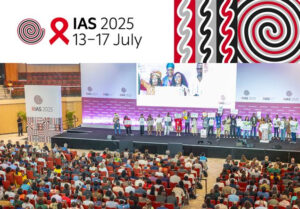The 13th International AIDS Society Conference on HIV Science, IAS 2025, held in July in Kigali, Rwanda, was marked by a dual narrative. On one hand, scientific breakthroughs and new approaches to prevention and treatment – including long-acting medications – offered new possibilities for changing the course of the HIV epidemic. On the other, a serious funding crisis caused by reduced international aid now threatens decades of progress.

The 13th International AIDS Society Conference on HIV Science, IAS 2025 brought together over 4,000 participants – researchers, clinicians, activists, and policymakers. The scientific program was particularly strong, showcasing research on injectable PrEP (lenacapavir, cabotegravir), innovative models of care and support, and new approaches to drug and vaccine development. For the first time, African researchers were prominently recognized as leaders of the scientific process. At the same time, activists warned that the closure of clinics serving key populations cannot be disguised as “integration” – it is a real loss of access to safe services. The central question raised was whether the global community can mobilize the necessary resources, protect human rights, and retain the advantage that science and experience have provided.
The European Institute of Public Health Policy presented the poster “Words matter: co-producing the PORADA HIV disclosure decision aid for older adults in Ukraine“, developed in collaboration with partners from Yale University and the University of East London.
The PORADA intervention resulted in the creation of a paper-based Decision Aid for older people with HIV (OPWH) in Ukraine, designed to support them in making informed choices about disclosing their HIV status. The tool was developed with attention to cultural context, the challenges of wartime, stigma, and the specific needs of the target group. In particular, the development process revealed that certain terms that are perceived as neutral in English may sound alarming when translated – for example, the phrase “disclosure of status” required more sensitive adaptation to fit the Ukrainian context.
The next step should involve integrating the tool into HIV care for OPWH and evaluating its effectiveness. This would support broader adaptation of the approach across health care settings in Ukraine and beyond.
